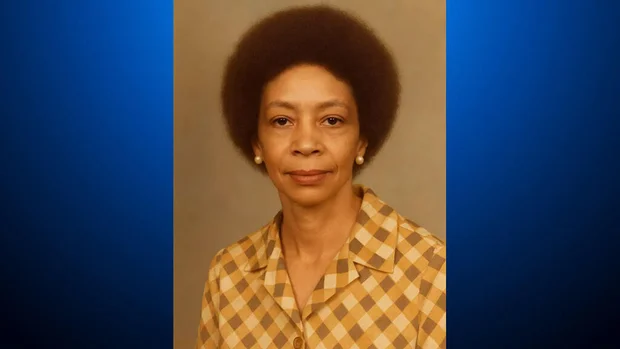Decades of Silence Broken as 1981 San Jose Homicide Victim is Finally Identified
A Mystery Buried for Over 40 Years
In a remarkable breakthrough that highlights the evolving power of modern forensic science, investigators have finally put a name to a woman whose brutal killing shocked the San Jose community over four decades ago. The victim, long known only to detectives and forensic analysts, has now been identified as Vivian Moss, a 54-year-old woman originally from Arkansas.
Her partial remains were discovered on July 11, 1981, in an open field—an area that today has transformed into the site of the VTA Berryessa Transit Center and BART station parking garage. What was once a scene of horror now stands as a symbol of closure and hope, thanks to the tireless work of cold case detectives and forensic genealogists.
A Life Remembered Through Forensic Genealogy
At the time of discovery, Moss’ identity remained unknown. She had no identification on her, and her body had been dismembered—a brutal act that deeply troubled investigators. The cause of death was ruled as multiple stab wounds to the chest, coupled with signs of postmortem dismemberment.
Despite the violent nature of the crime and the efforts of detectives in 1981, the case quickly went cold. Over the years, all that remained were fragments—both physical and emotional—left behind in evidence boxes and family memories.
That began to change in 2023, when cold case investigators partnered with forensic genealogists to revisit the case. With the help of DNA technology and genetic tracing, they were able to build a family tree and trace the victim’s lineage. DNA samples taken from crime scene evidence were compared with those of a woman who turned out to be Vivian Moss’ granddaughter.
The Family Connection That Unlocked the Truth
The moment of truth came when investigators reached out to Moss’ surviving family. Her granddaughter revealed a haunting detail—Vivian had been scheduled to pick her up for a sleepover the night she disappeared, but never arrived. That emotional recollection added depth to the timeline and gave investigators a personal connection that tied the evidence together.
Through genealogical testing and DNA comparison, authorities conclusively confirmed the identity of the victim as Vivian Moss. This resolution brought long-awaited answers to Moss’ family, who had lived for decades without closure.
To help the public connect with her story, a composite image generated by AI—created using family photos—was released to illustrate what Vivian likely looked like before her untimely death.
The Woman Behind the Name
Born in 1927 in Arkansas, Moss lived a life centered around community and faith. She was a regular attendee at Mount Zion Spiritual Church in Oakland, where she shared a close bond with church leader Louis H. Narcisse, a prominent figure in the congregation who passed away in 1989.
Investigators believe Moss may also have worked at a local elementary school in Oakland, adding to the picture of a woman who was deeply connected to her community through education and spirituality.
The Search for Justice Continues
While identifying Moss marks a major step forward, the case remains unsolved. Investigators and Moss’ surviving family members are now asking the public for help in uncovering the identity of her killer.
“Her name is Vivian Moss. We know it now. Her family knows it. And so does the community,” said one investigator. “We owe her more than just a name. We owe her justice.”
Authorities urge anyone with information—no matter how small—to come forward and help complete the next chapter of this story. Moss’ family, still mourning the pain of a violent and sudden loss, holds out hope that someone, somewhere, holds the key to identifying the person responsible.
How You Can Help
If you have any information related to the murder of Vivian Moss or her whereabouts in the days leading up to her death, please reach out to the Cold Case Unit at 408-792-2466 or via email at coldcasetips@dao.sccgov.org.
Vivian Moss’ story is no longer a cold file gathering dust in a storage room. It is a voice returned to a woman who was once silenced. Her family now has a name to mourn, and the community has a reason to keep pressing for the truth.
The case stands as a powerful reminder that no victim is ever truly forgotten, and with persistence, compassion, and science, even the coldest cases can be warmed by the light of justice.
